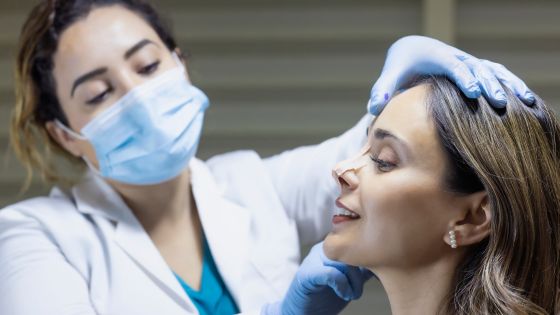Australia was among the top countries in the total number of cosmetic procedures performed. This included both surgical and non-surgical procedures. Rhinoplasty was one of the most commonly performed surgical procedures in Australia. Individuals of various ages and backgrounds often sought it.
Rhinoplasty in Australia allows individuals to enhance their facial harmony and boost self-confidence. Beyond the medical expertise required to perform a successful rhinoplasty, the role of effective communication between the patient and the surgeon must be balanced. A seamless flow of information and understanding between these stakeholders contributes to achieving optimal surgical outcomes and patient satisfaction.
Establishing Realistic Expectations
Effective communication sets the foundation for realistic expectations. Patients often bring a diverse range of desires and aspirations to their consultation. Some may seek drastic changes, while others prefer subtle alterations. The surgeon’s role is to comprehend these desires and provide informed insights into what is achievable, considering the patient’s facial anatomy and surgical limitations. This transparent dialogue helps align the patient’s expectations with the potential outcomes, reducing the chances of post-surgery dissatisfaction.
Visual Aids as a Communication Tool
Visual aids have emerged as a powerful communication tool in rhinoplasty. Surgeons can utilise advanced imaging software to create simulations of potential outcomes. These representations allow patients to visualise the projected changes and offer a more tangible understanding of the possibilities. Surgeons can use these images to explain surgical techniques, potential limitations, and expected results, facilitating a more comprehensive discussion.
Listening as a Key Skill
Listening is an often-underestimated skill that is pivotal in successful rhinoplasty communication. Patients’ motivations, concerns, and personal experiences are unique. A surgeon’s ability to actively listen and empathise with patients builds trust and helps the surgeon tailor their approach to meet their needs. Understanding the emotional aspects of a patient’s decision to undergo rhinoplasty can guide the surgeon in providing holistic care and achieving satisfactory results.
Building Trust and Confidence
Trust is the cornerstone of any successful doctor-patient relationship. Open and transparent communication fosters a sense of trust between the patient and the surgeon. Patients need to feel that their concerns are being heard, their questions answered, and their anxieties addressed. Surgeons, on the other hand, must be forthcoming about their qualifications, experience, and the potential risks associated with the procedure. This trust is crucial for the surgical process and the patient’s psychological well-being during pre- and post-operative periods.
Informed Decision-Making
Effective communication empowers patients to make informed decisions about their rhinoplasty journey. Surgeons should educate patients about surgical approaches, potential risks, recovery timelines, and post-operative care. When patients are armed with comprehensive information, they can actively participate in decision-making, leading to outcomes aligned with their values and preferences.
Addressing Patient Concerns
Patients will likely have concerns or doubts before undergoing a surgical procedure as significant as rhinoplasty. Whether it’s about pain, scarring, or the final aesthetic outcome, these concerns must be adequately addressed through clear and accurate communication. Surgeons should provide honest information and alleviate misconceptions, allowing patients to approach the surgery with a clear and focused mindset.
Holistic Post-Operative Support
Surgeons should maintain regular follow-up conversations with their patients during the recovery phase. This ongoing dialogue allows for monitoring the healing process, addressing concerns, and offering guidance on proper wound care and activity restrictions. By staying connected with patients throughout their recovery journey, surgeons can ensure that any unexpected issues are promptly addressed and patients feel well-supported during this critical phase. This post-operative communication contributes to physical healing and enhances the patient’s emotional recovery, reinforcing the positive impact of effective communication on the overall rhinoplasty experience.
Conclusion
In rhinoplasty, the communication between a patient and a surgeon is a dynamic interplay of understanding, trust-building, and information sharing. The success of Rhinoplasty in Australia hinges not only on the surgeon’s technical prowess but also on their ability to communicate effectively. Effective communication, therefore, emerges as the unsung hero in the journey towards successful rhinoplasty outcomes.




















